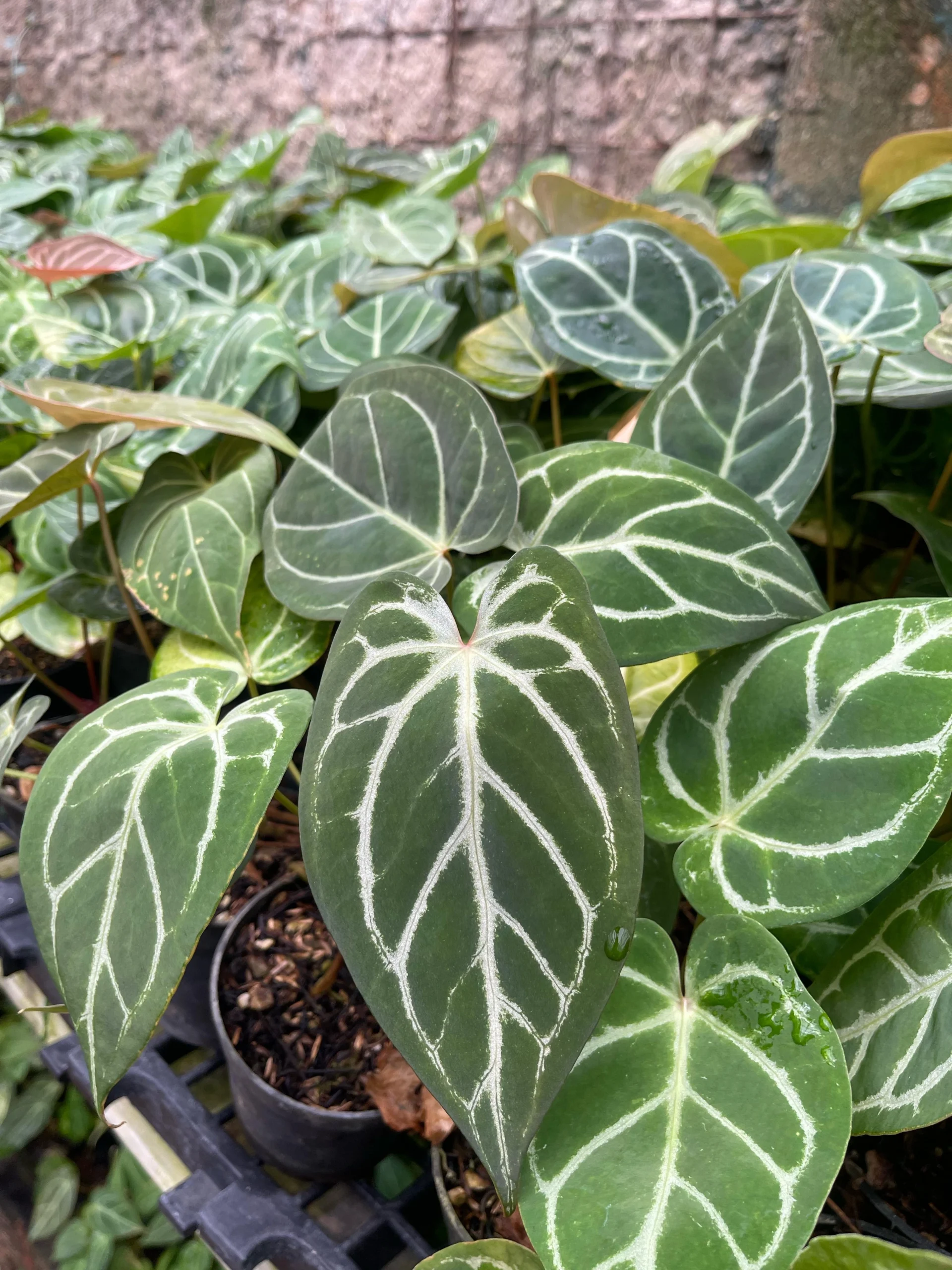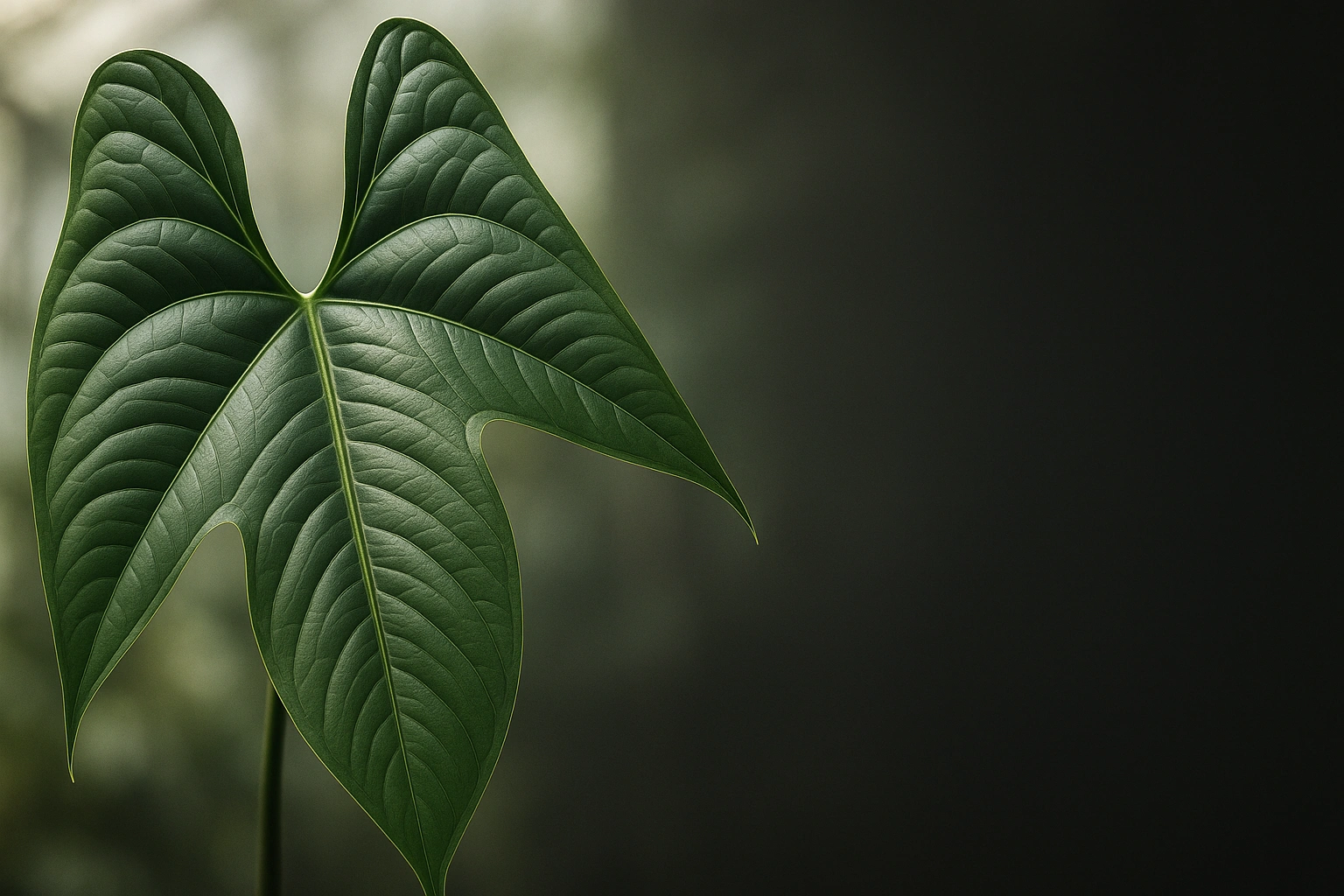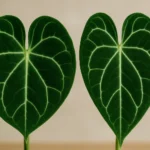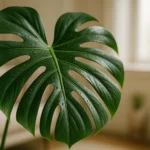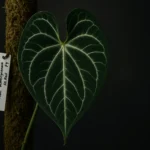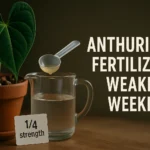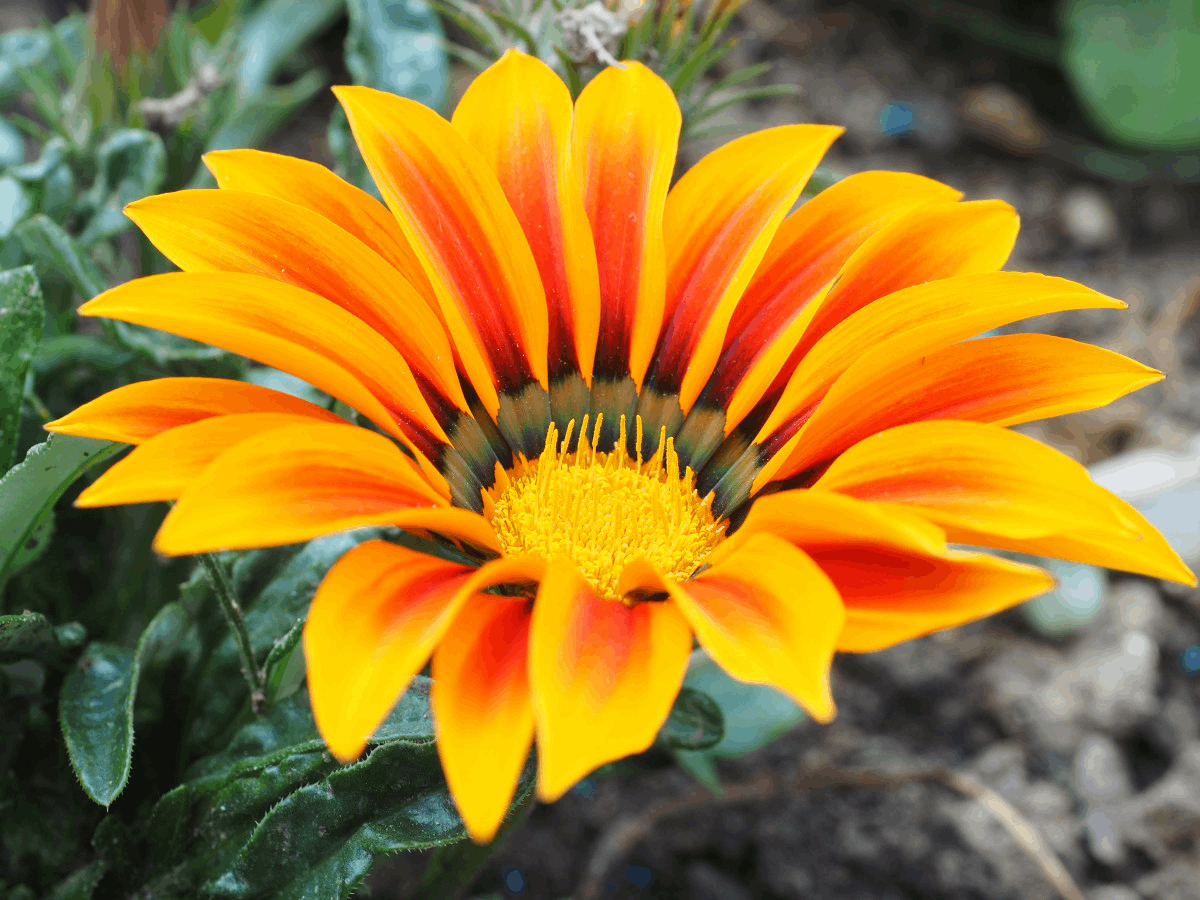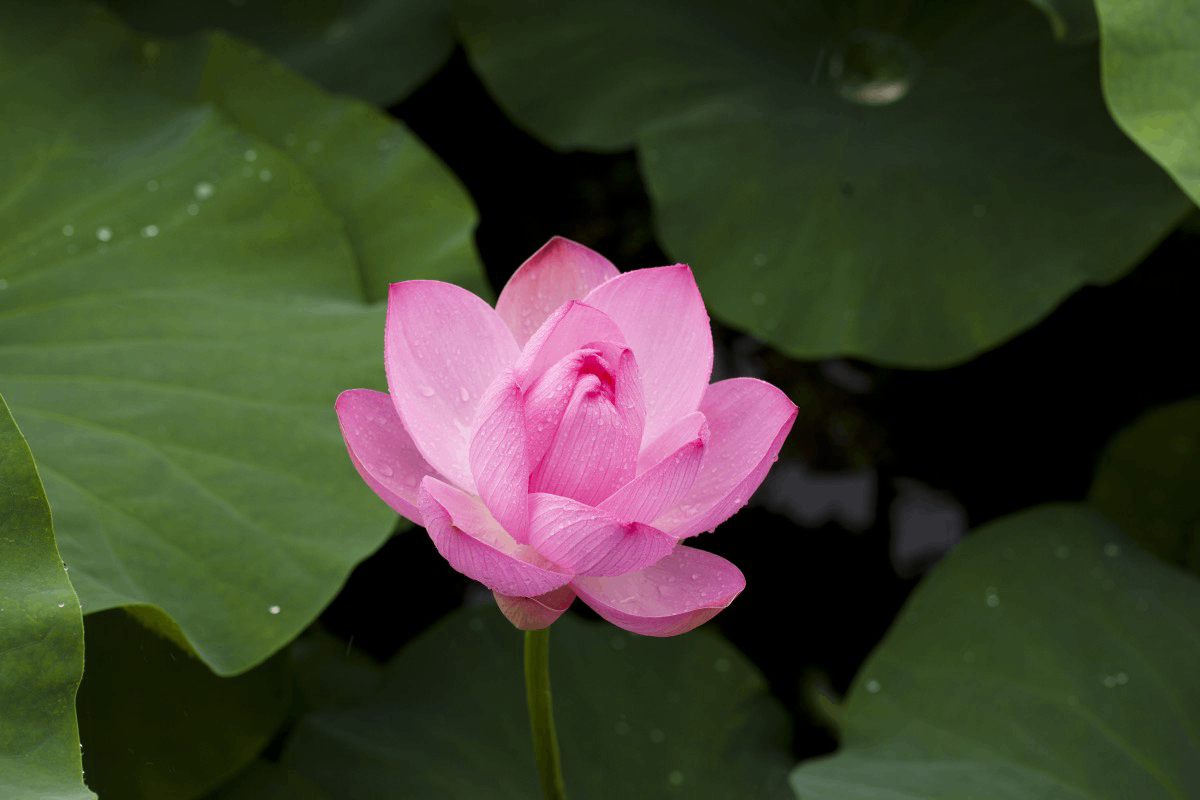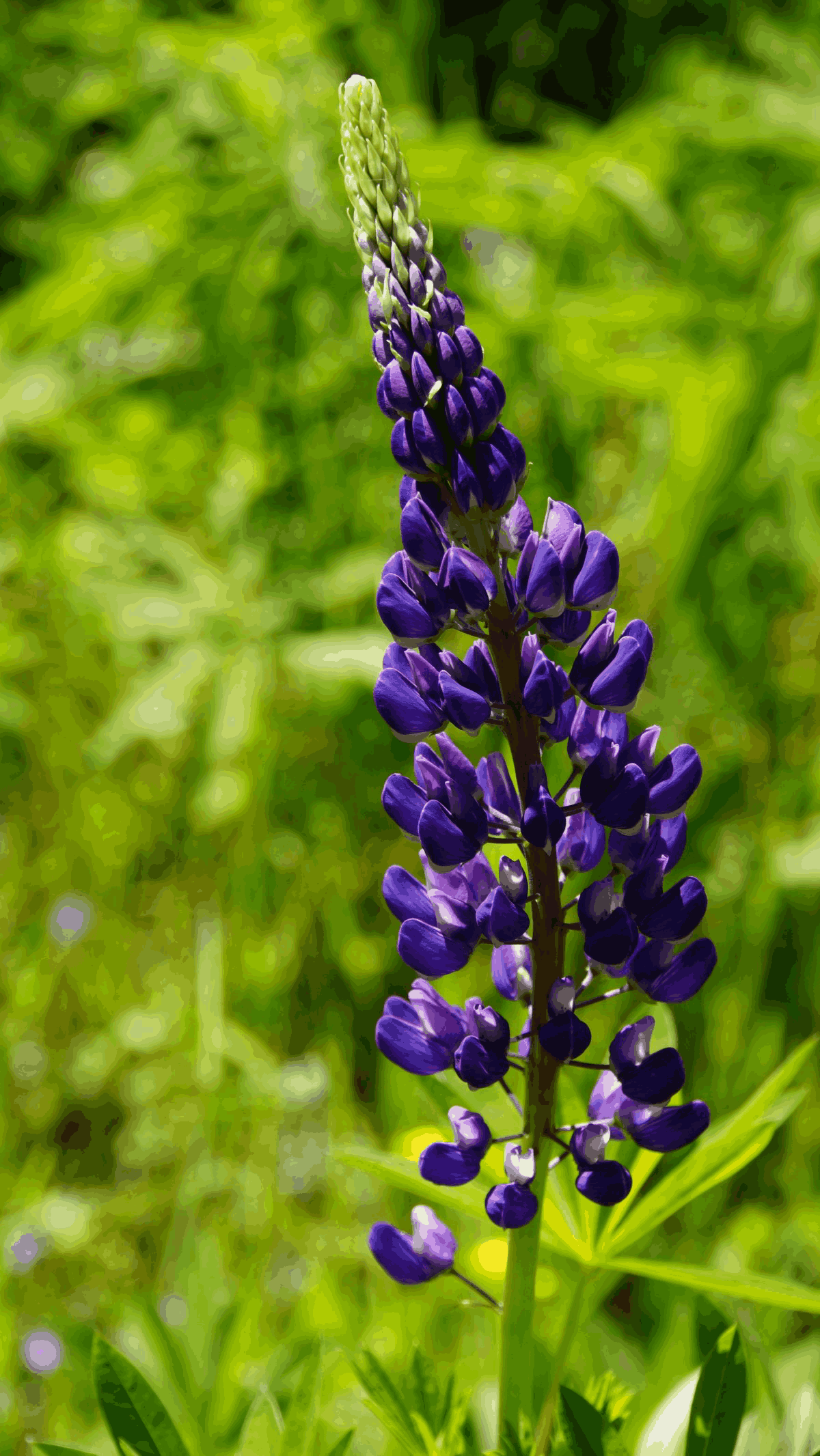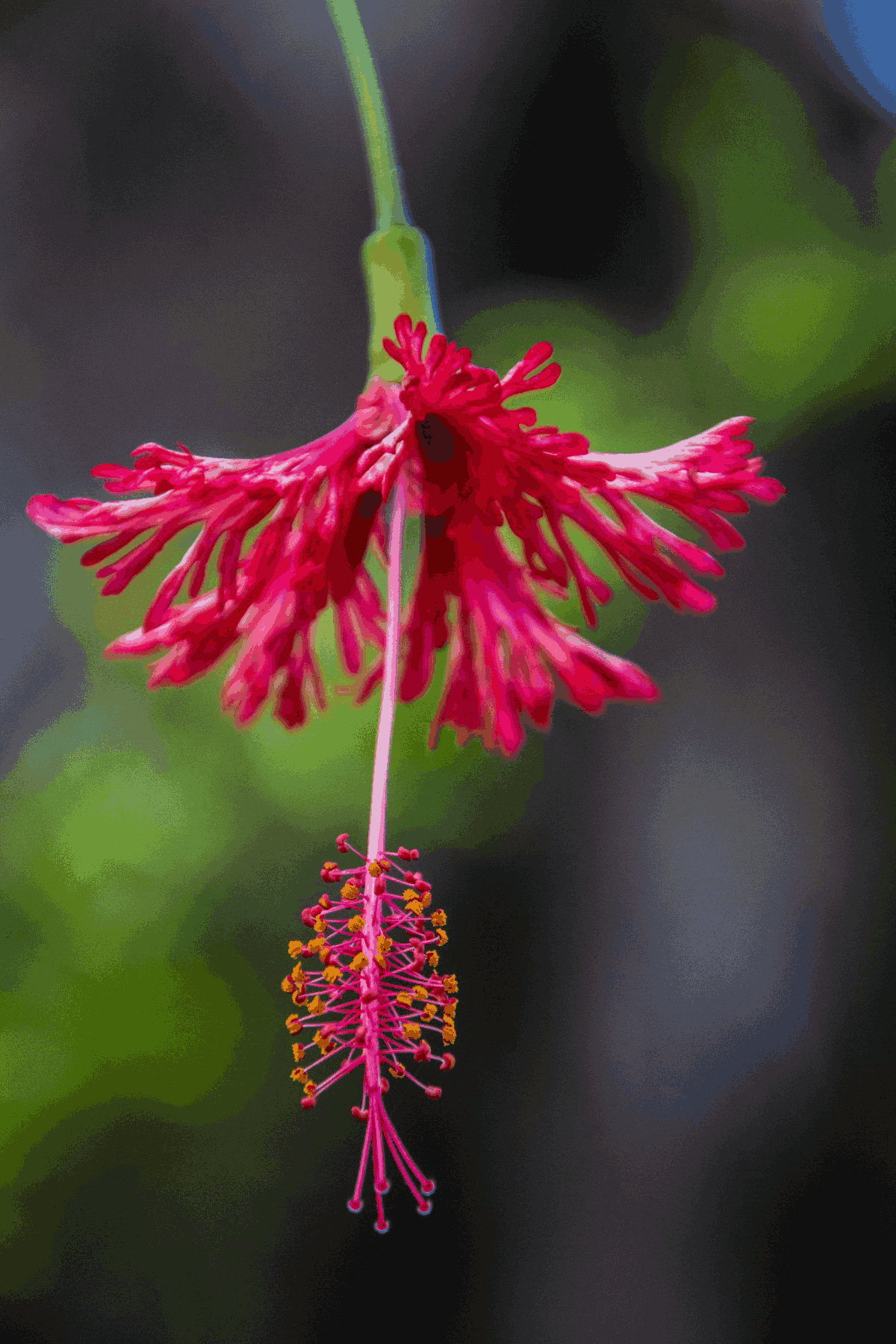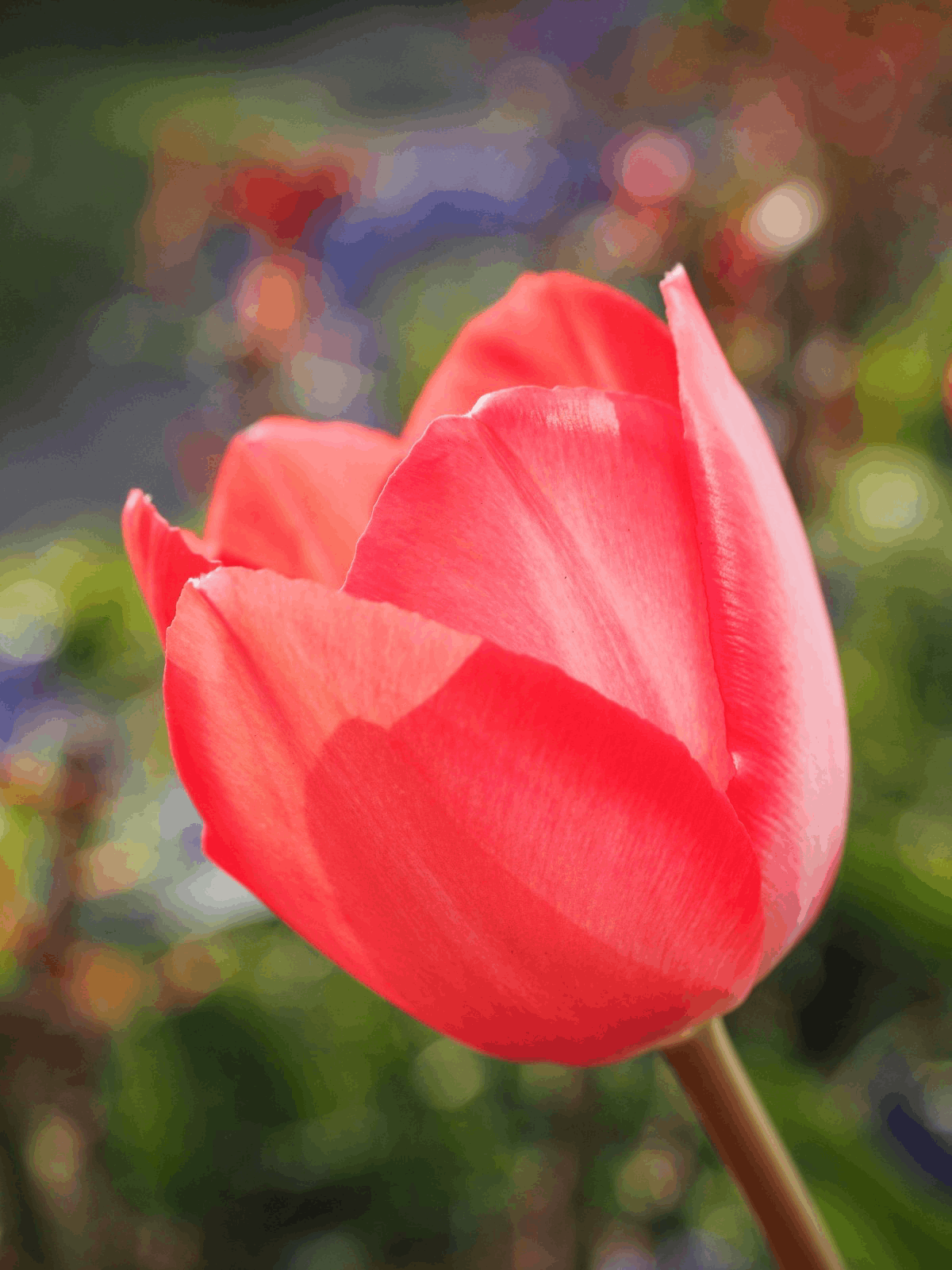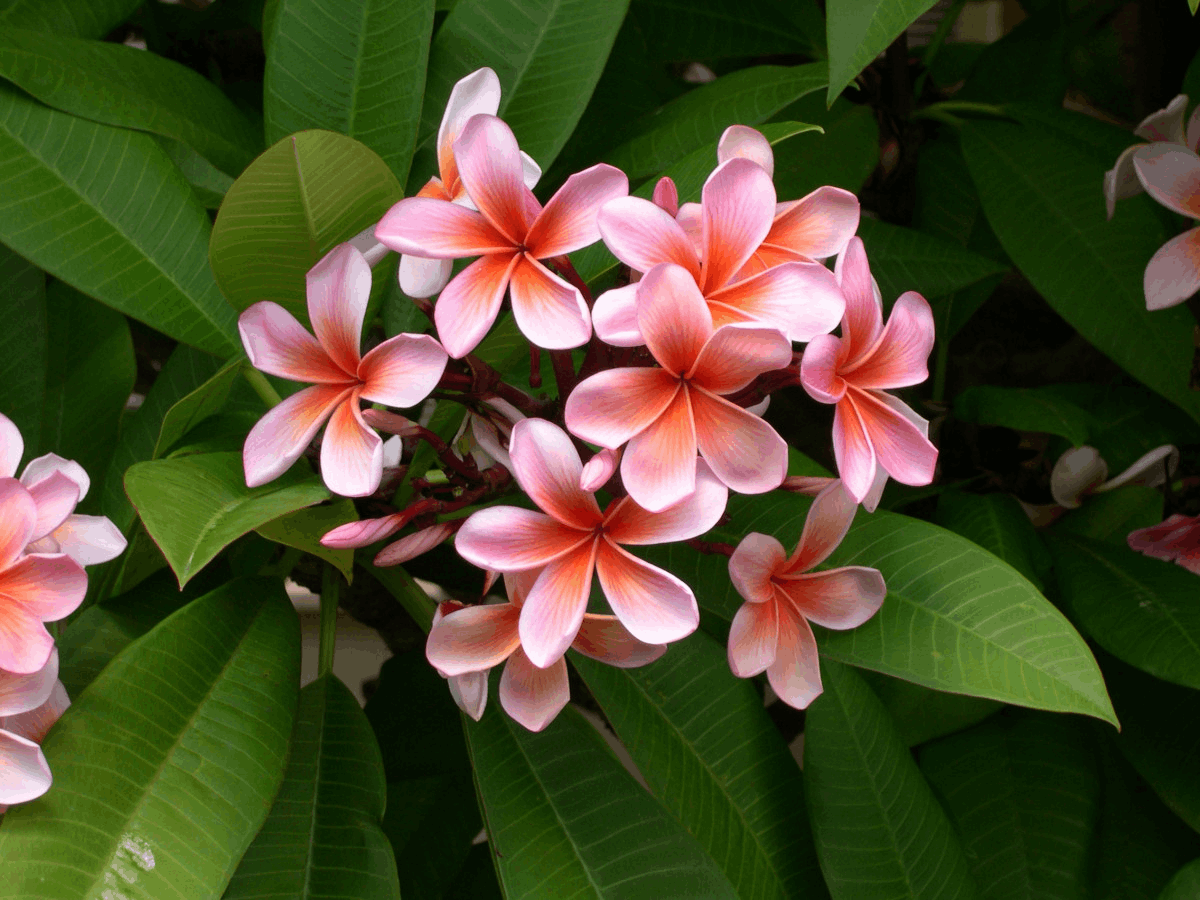GreenWandering
“Discover the world’s most unique leaves.”
What Is an Anthurium Pterodactyl?
In simple terms, the Anthurium pterodactyl is believed to be a complex hybrid anthurium, meaning it is not a naturally occurring species but rather a product of intentional cross-pollination by a grower. It belongs to the vast Anthurium genus, which is part of the Araceae family. While its exact lineage is unconfirmed, its features suggest parentage from pedatoradiate (bird’s foot) anthuriums, possibly involving species like Anthurium pedatoradiatum or Anthurium clavigerum. Authoritative sources like Kew’s Plants of the World Online provide extensive databases for recognized species, but you won’t find pterodactyl listed, confirming its hybrid status.
In 2025, the appeal of plants with such unique foliage is stronger than ever. As more people embrace biophilic design and curate their indoor jungles, statement plants like this one have become highly sought after for their “Instagrammable” quality and the sense of accomplishment that comes with growing them successfully. They are more than just decor; they are a hobby and a connection to the natural world.
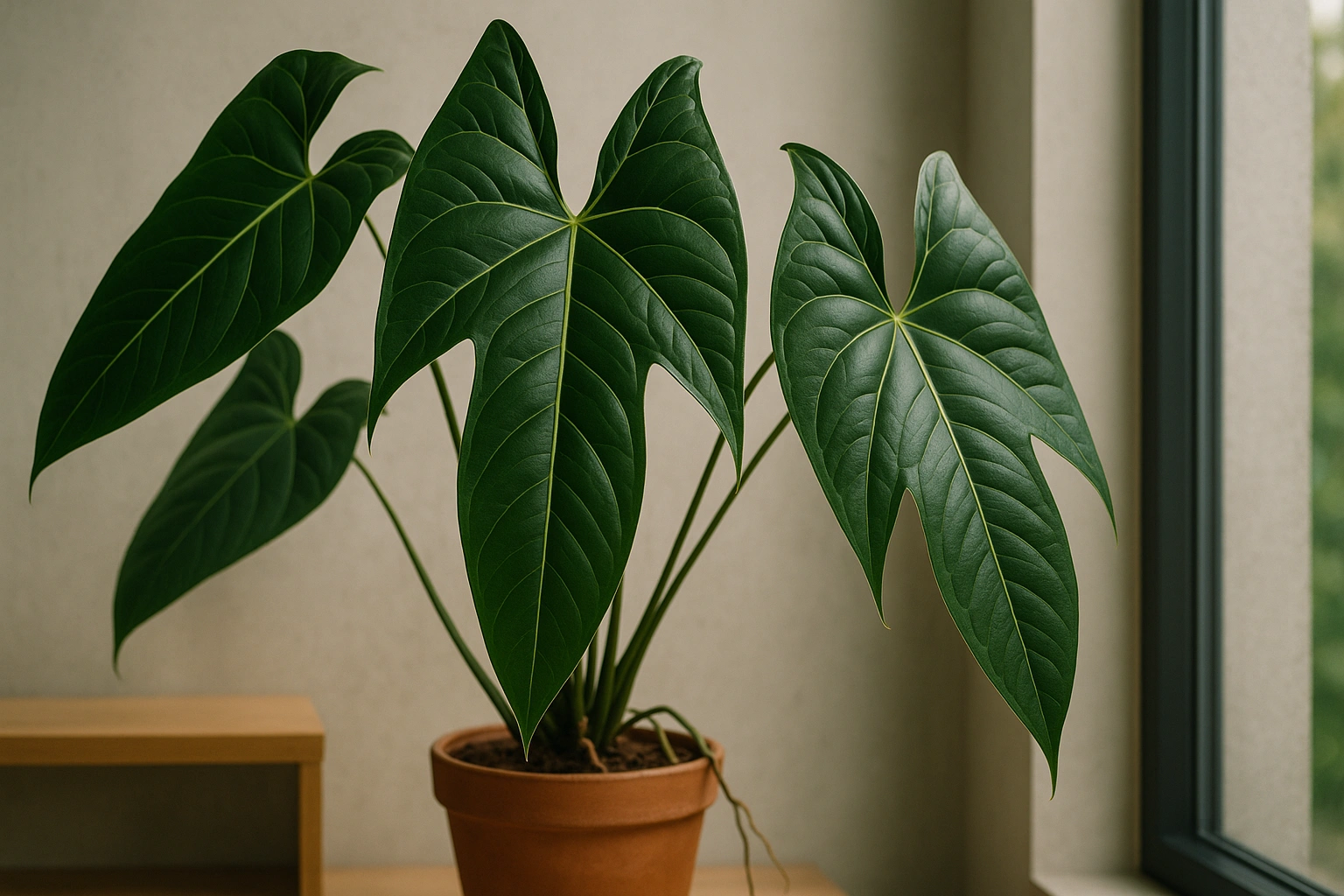
Key Visual Traits & Identification
What truly sets this anthurium apart are its unforgettable leaves. Unlike the simple heart-shaped leaves of more common anthuriums, the pterodactyl is a master of dramatic form.
Leaf Shape & Venation
The most defining feature is its deeply lobed, or pedatisect, leaf structure. A mature leaf has a prominent central lobe with several smaller, finger-like lobes extending outwards and backwards on each side, creating the iconic “pterodactyl wing” shape. The leaves have a semi-glossy to matte finish and are relatively smooth to the touch, lacking the velvety texture of species like the Anthurium regale or the bullate, quilted surface of an Anthurium veitchii. The venation is elegant and palmate, with veins radiating from the petiole’s insertion point.
Color & Emergent Growth
New leaves often emerge in a stunning shade of bronze, red, or deep purple, gradually hardening off to a rich, dark green. This fleeting display of color adds another layer of beauty to the plant. Unlike variegated plants, its coloration is stable and not dependent on specific light conditions to maintain its pattern, though healthy light exposure is crucial for vibrant new growth.
Growth Habit
Anthurium pterodactyl is a climbing epiphyte. In its natural habitat, it would use its aerial roots to scale trees, reaching for better light. In cultivation, this means it needs support to thrive. As it matures, it will produce a thick stem with nodes from which new leaves and aerial roots emerge. Providing a moss pole or trellis not only supports its weight but also encourages larger, more robust leaf development, as the aerial roots can anchor themselves and absorb moisture and nutrients.
Care Basics for Healthy, Photogenic Leaves
Growing a collector’s anthurium isn’t difficult, but it does require attention to its specific needs. Getting these basics right is the key to lush, photogenic foliage.
- Light: Bright, indirect light is non-negotiable.
- Watering: Water when the top 1–2 inches of soil are dry.
- Humidity: Aim for 60% or higher.
- Temperature: Keep between 65–80°F (18–27°C).
- Airflow: Gentle air circulation is crucial to prevent fungal issues.
Soil & Potting Mix
The single most common mistake with aroids is using dense, water-retentive soil. These plants need a chunky, well-draining aroid mix that mimics their epiphytic nature. A good recipe is an equal-parts blend of orchid bark, perlite, and high-quality potting soil or coco coir. This creates a light, airy substrate that allows oxygen to reach the roots and prevents waterlogging, which can quickly lead to root rot.
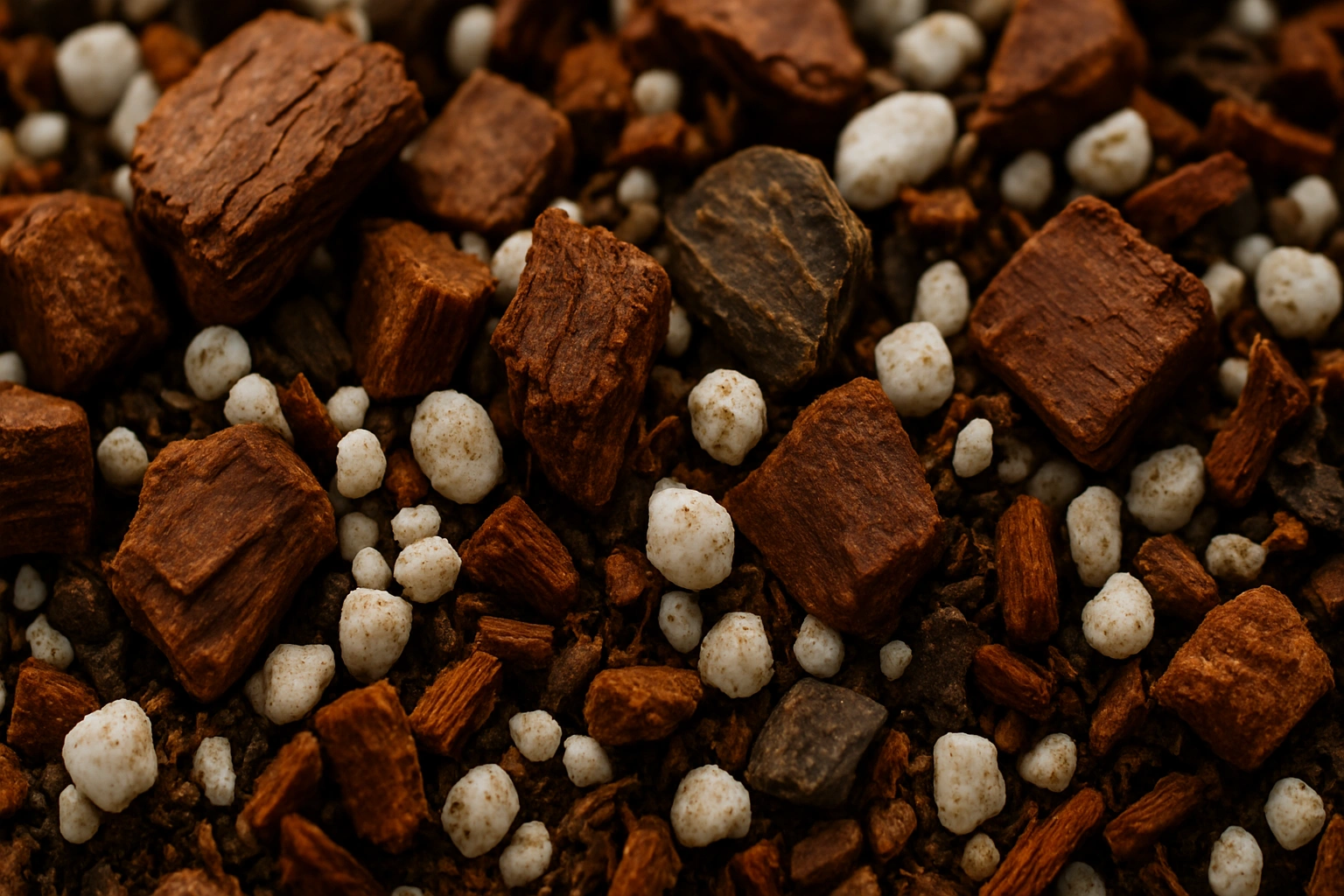
Watering Rhythm & Cues
Forget a strict watering schedule. Instead, learn your plant’s cues. The “finger test” is your best friend: insert your finger into the mix, and if it feels dry up to the first or second knuckle, it’s time to water. Water thoroughly until it drains freely from the bottom of the pot, then discard the excess water. Never let the pot sit in a saucer of water, as this causes “wet feet” and suffocates the roots. For more in-depth guidance on aroid care, our article on the Anthurium Ace of Spades offers additional tips.
Light Positioning
Position your Anthurium pterodactyl within a few feet of an east-facing window or further back from a south or west-facing window. A sheer curtain can help diffuse harsh light. Direct, scorching sun will burn the leaves, creating brown, crispy patches. Insufficient light will lead to slow growth, smaller leaves, and a leggy appearance.
Fertilization & Growth Season
During the growing season (spring and summer), feed your anthurium with a balanced liquid fertilizer diluted to half-strength every 2–4 weeks. Reduce feeding in the fall and winter when growth naturally slows. Over-fertilizing can burn the roots and damage the plant, so consistency and moderation are key. The Royal Horticultural Society (RHS) offers excellent general advice on houseplant fertilization.
Buying Guide: Choosing a Healthy Plant
Investing in a collector plant requires a discerning eye. Here’s a checklist to use when you’re ready to buy:
- Leaf Condition: Look for firm, vibrant leaves. A small amount of cosmetic damage from shipping is normal, but avoid plants with widespread yellowing, limpness, or signs of pests.
- Pest Check: Inspect the undersides of leaves and the junction where the petiole meets the stem. Look for common pests like spider mites, thrips, or mealybugs.
- Root Health: If possible, check the roots. Healthy roots are firm and white or light tan. Dark, mushy roots are a sign of rot.
- Node Activity: Look for active growth points or nodes, which indicate the plant is healthy and poised for new growth.
- Realistic Photos: At GreenWandering, we believe in transparency. Ensure you are buying from a seller who provides recent, unaltered photos of the exact plant you will receive. Live plants have natural variations and minor imperfections; this is part of their beauty.
Shipping & First-Week Acclimation
Receiving a plant in the mail can be stressful—for both you and the plant! Proper acclimation is vital for its long-term health.
Unboxing Steps
When the box arrives, unpack it carefully and immediately. Good sellers will secure the plant with a stake, wrap the soil to retain moisture, and use soft padding to protect the leaves. Inspect the plant thoroughly for any shipping damage or pests. It’s wise to isolate any new plant from your collection for a week or two as a quarantine measure.
7-Day Acclimation Plan
A plant’s first week in a new home sets the stage for its future.
- Day 1-2: Place it in a spot with medium, indirect light and high humidity (a bathroom or near a humidifier is ideal). Do not repot it. Water only if the soil is completely dry.
- Day 3-4: If the plant looks stable, you can move it to its permanent location with bright, indirect light. Continue to monitor its water needs.
- Day 5-7: The plant should be settling in. Avoid any drastic changes. Do not fertilize for at least a month. This period of minimal disturbance allows the plant to recover from shipping shock and adjust to your home’s unique environment.
Comparison of Unique Anthuriums
| Plant | Key Leaf Feature | Light Needs | Watering | Growth Rate | Difficulty |
|---|---|---|---|---|---|
| Anthurium pterodactyl | Deeply lobed, “pterodactyl wing” shape. Semi-glossy. | Bright, Indirect | Medium | Moderate | Intermediate |
| Anthurium veitchii | Long, corrugated/rippled leaves. Pendent growth. | Bright, Indirect | High | Slow-Moderate | Advanced |
| Anthurium warocqueanum | Very long, dark velvety leaves with silver veins. | Medium, Indirect | High | Slow | Advanced |
| Anthurium clarinervium | Heart-shaped, dark velvety leaves with bold white veins. | Bright, Indirect | Medium | Moderate | Beginner-Intermediate |
| Anthurium pedatoradiatum | Deeply lobed, “bird’s foot” shape. Thinner leaf texture. | Bright, Indirect | Medium | Fast | Beginner-Intermediate |
Common Mistakes to Avoid
- Overwatering: The #1 killer. Always let the top layer of soil dry out.
- Poor Airflow: Stagnant, humid air is a breeding ground for fungal and bacterial issues. Use a small fan to create gentle air movement.
- Harsh Direct Sun: This will scorch the leaves, leaving permanent brown marks.
- Potting Too Big: A pot that is too large holds excess moisture, leading to root rot. Choose a pot only 1–2 inches wider than the root ball.
- Drastic Moves Post-Shipping: Give the plant a week to acclimate before making any major changes like repotting.
- Low Humidity: Crispy brown edges on leaves are often a sign that the air is too dry.
Expert Tips from GreenWandering
Here are a few advanced tips from the GreenWandering team to take your care to the next level:
- Provide a Moss Pole Early: Giving your climbing anthurium support early on encourages it to produce larger, more mature leaves faster.
- Minimize Repot Shock: When you do repot, try to disturb the root ball as little as possible. Repot in the growing season so the plant can recover quickly.
- Flush the Soil: Every few months, water the plant heavily until water runs freely for a minute. This flushes out accumulated fertilizer salts from the soil.
- Use a Humidifier: While pebble trays and misting help, a small humidifier is the most effective way to provide the consistent high humidity these tropical plants crave.
- Watch for Pests After Rain: If you summer your plants outdoors, be extra vigilant for pests after periods of rain.
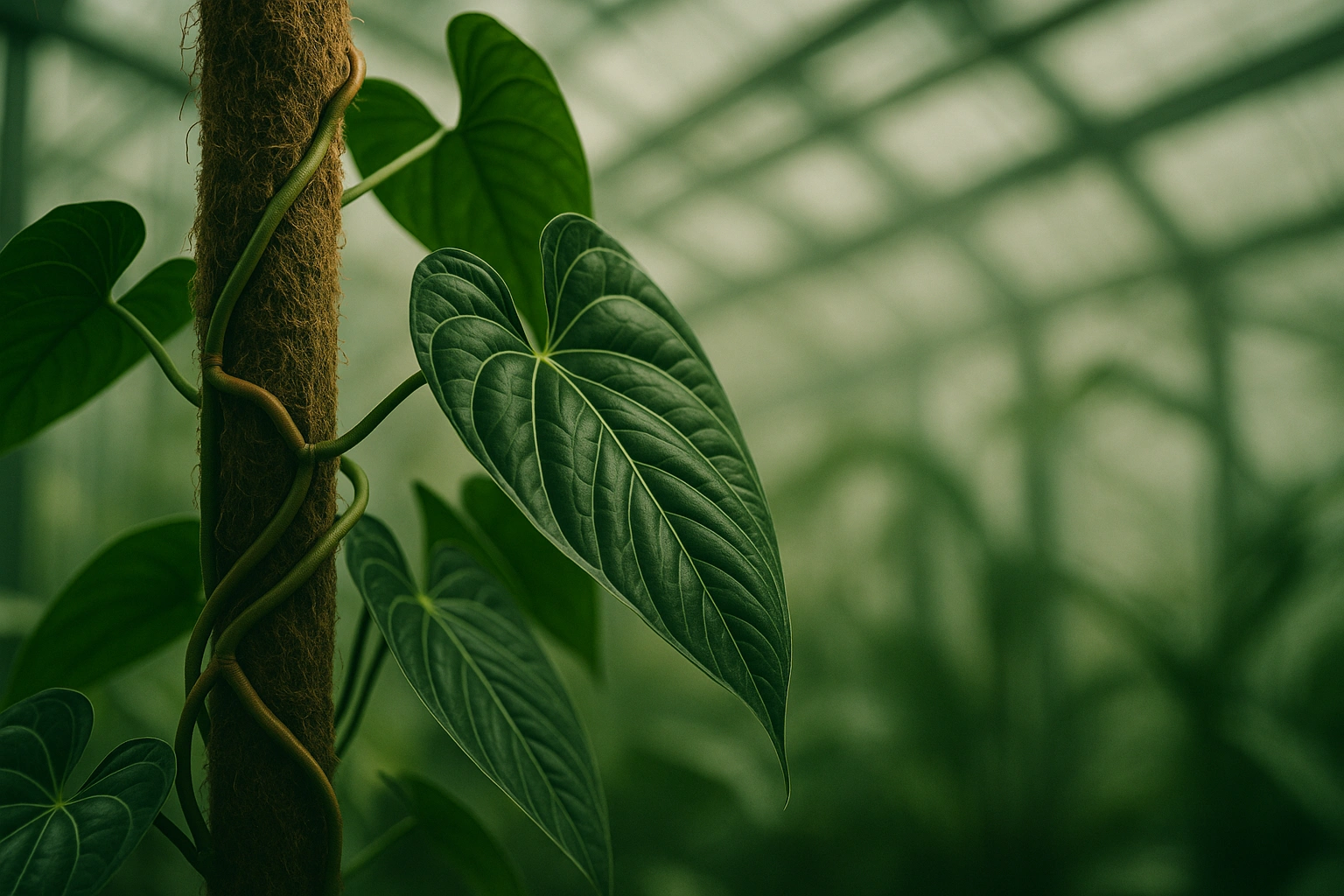
“The beauty of a plant like the Anthurium pterodactyl is not just in its leaves, but in the story and the patience it represents. Its undocumented parentage reminds us that so much of the plant world is a wonderful mystery waiting to be nurtured.”
— The GreenWandering Team
Frequently Asked Questions (FAQ)
How much light does an Anthurium pterodactyl need?
It thrives in bright, indirect light. An east-facing window is perfect. It should never be placed in direct, harsh sunlight, which will burn its leaves.
Why are the new leaves on my anthurium small?
Small new leaves are typically a sign of insufficient light. The plant is conserving energy. Try moving it to a brighter location. It can also be a sign it needs to be fertilized.
Is Anthurium pterodactyl a fast grower?
Under optimal conditions (good light, humidity, and regular feeding), it has a moderate growth rate, producing a new leaf every month or two during the growing season.
When should I repot my Anthurium pterodactyl?
Repot when it becomes root-bound, meaning the roots have filled the entire pot. This is typically every 1-2 years. Always choose a pot that is only slightly larger than the previous one.
Can I grow it in lower light?
While it can survive in lower light conditions, it will not thrive. Growth will be slow, leaves will be smaller, and the plant will have a much less vigorous appearance.
Conclusion: Embrace the Mystery
While its hybrid notes may remain a topic of speculation, the joy it brings is undeniable. We hope this guide has equipped you with the confidence to grow and appreciate the magnificent anthurium pterodactyl in your own home.
